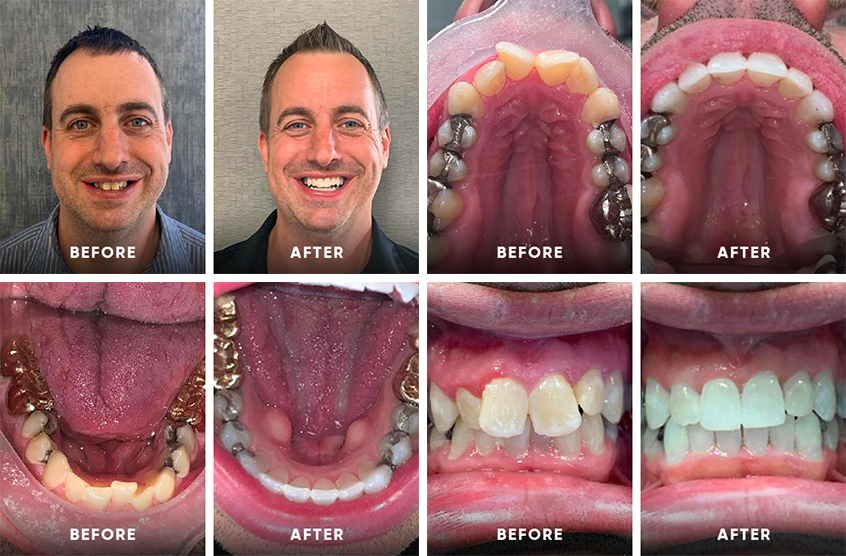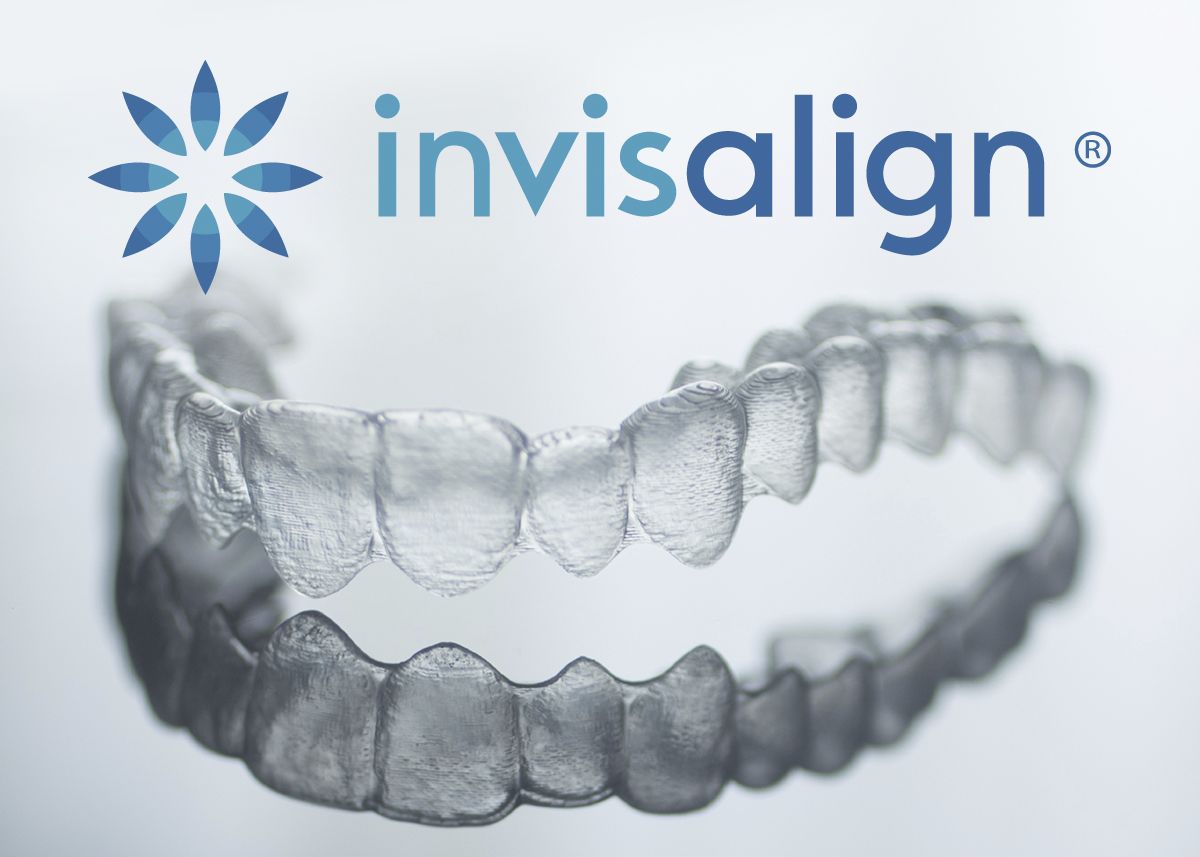Invisalign vs. Standard Dental braces: Which Alternative Is Right for You?
When taking into consideration orthodontic treatment, the option in between Invisalign and traditional braces provides a number of crucial aspects that warrant cautious examination. Invisalign supplies a very discreet choice with removable aligners, while conventional braces supply an extra noticeable yet efficient remedy for extreme imbalance. Each option encompasses distinct benefits and disadvantages connected to aesthetics, comfort, treatment duration, and cost. Understanding these subtleties is essential for making a notified decision that lines up with your personal preferences and way of living. The question remains: which alternative will ideal fulfill your orthodontic demands and assumptions?
Overview of Therapy Choices

In comparison, conventional dental braces contain steel brackets and cords that are adhered to the teeth. This technique applies constant stress in time to attain alignment. While reliable for complicated orthodontic concerns, conventional dental braces require routine visits for modifications and can present challenges in keeping oral health due to the trouble of cleaning about brackets and cables.
Both options have their qualities, and the choice typically depends upon specific dental conditions, way of life choices, and patient compliance. Ultimately, getting in touch with an orthodontic professional is critical for identifying the most appropriate therapy strategy tailored to private demands. Understanding the nuances of each option can substantially affect the general success of orthodontic therapy.
Aesthetic Considerations
A considerable factor affecting the option between Invisalign and conventional dental braces is the visual appeal each therapy uses. Invisalign aligners are crafted from clear plastic, making them essentially undetectable when worn.
On the other hand, typical dental braces are composed of steel brackets and wires, which can be extra recognizable. While improvements in orthodontic innovation have actually caused the growth of smaller sized brackets and tinted elastics, typical braces still keep a more obvious profile. For some people, the exposure of braces might discourage them from seeking essential therapy.
Inevitably, the selection between Invisalign and traditional braces may depend upon individual preferences pertaining to appearances. People who focus on discernment commonly lean toward Invisalign, while those who are much less concerned regarding presence may go with standard dental braces. Understanding the aesthetic effects of each option is crucial for making a notified choice that aligns with one's way of life and choices.
Convenience and Convenience

In regards to comfort, Invisalign aligners are removable, allowing clients to enjoy their favored foods without limitation and preserve optimal dental health. Cleaning and flossing are simplified, as the aligners can be taken out throughout these regimens, whereas conventional braces require careful navigating around cables and brackets.
In contrast, typical braces demand regular changes, making them less hassle-free for anchor those with busy timetables. Overall, the convenience and convenience of Invisalign make it an attractive selection for several individuals looking for orthodontic treatment.
Treatment Period and Effectiveness
While both Invisalign and standard dental braces work in correcting dental imbalances, the duration of treatment can vary significantly between both options. Typically, Invisalign treatment can take anywhere from 12 to 18 months, depending upon the intricacy of the case. The clear aligners function by gradually moving teeth right into their preferred placements, and regular follow-ups with an orthodontist assistance make sure progress remains on the right track.
On the other hand, conventional dental braces frequently need a longer dedication, usually ranging from 18 months to three years. This results from their set nature and using braces and cords, which can be much more efficient for serious imbalances and complex situations (Invisalign). The therapy effectiveness of conventional braces is well-documented, as they enable specific adjustments and greater control over tooth movement
Eventually, the option between Invisalign and conventional braces might pivot on both the expected treatment duration and the certain oral concerns handy. Consulting with an orthodontist is essential, as they can give customized referrals based upon private requirements, ensuring the picked approach straightens with wanted end results and durations.
Cost Contrast and Insurance Options
Price plays a substantial function in the decision-making process for people taking into consideration orthodontic therapy, whether choosing for Invisalign or standard braces. Generally, the price of Invisalign varieties from $3,000 to $8,000, while traditional dental braces normally cost in between $2,000 and $6,000. Variables affecting these costs consist of the complexity of the case, the period of treatment, and geographical area.
Lots of dental insurance policy plans supply partial insurance coverage for orthodontic home treatments, however the specifics can differ extensively. Typically, traditional braces may be extra frequently covered by insurance coverage strategies contrasted to Invisalign, which some insurers categorize as an aesthetic procedure.
Additionally, a number of orthodontic techniques offer flexible layaway plan, making both treatment alternatives extra available. click to find out more Individuals need to inquire about prospective funding options and price cuts for ahead of time payments. Assessing the overall expense, consisting of insurance policy advantages and payment plans, is vital for making a notified choice that straightens with both visual choices and spending plan factors to consider.

Final Thought
In recap, the selection in between Invisalign and traditional braces rests on numerous factors, including visual choices, convenience, treatment duration, and expense. Invisalign uses a very discreet, removable alternative that facilitates dental health and nutritional adaptability, while traditional dental braces might be better for intricate dental issues and frequently come at a reduced rate factor. Ultimately, consultation with an orthodontist is essential to assess individual conditions and establish one of the most suitable treatment alternative for accomplishing optimal oral placement.
When thinking about orthodontic treatment, the choice in between Invisalign and standard braces offers a number of important variables that merit careful analysis.Contrasting Invisalign and conventional braces exposes distinct therapy choices for orthodontic correction.While both Invisalign and typical braces are reliable in dealing with oral misalignments, the period of treatment can differ substantially between the 2 choices.Expense plays a significant duty in the decision-making process for individuals taking into consideration orthodontic treatment, whether deciding for Invisalign or typical braces.In recap, the selection in between Invisalign and traditional braces pivots on multiple aspects, consisting of aesthetic choices, convenience, treatment duration, and price.